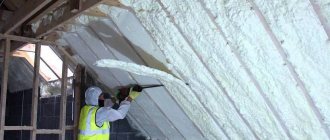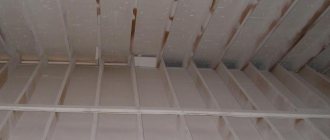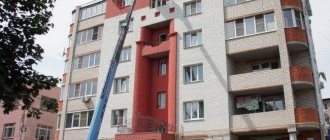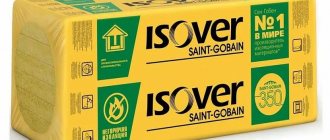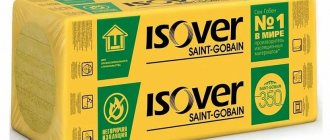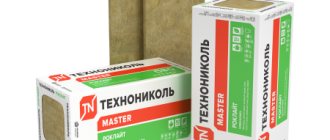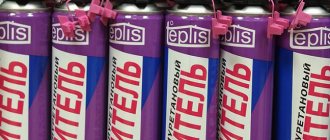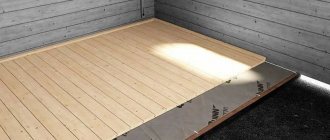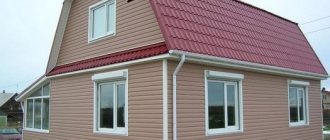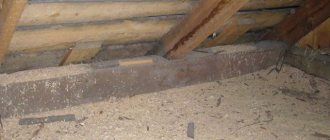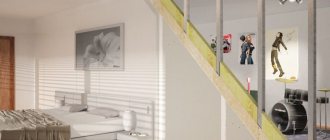Corundum is a liquid ceramic thermal insulation designed to protect complex structures (usually pipelines, various tanks and equipment) from energy loss or external heating. In appearance, it resembles a very thick white paint; it is applied in the same way - with a brush, roller or spray. But its composition differs from conventional paints and varnishes, since 70% of its volume is occupied by hollow ceramic microspheres. They have the effect of reducing thermal conductivity, turning a thin coating into a reliable insulator.
Characteristics
The composition of the Corundum binder includes various components that provide the thermal paint with certain properties:
- Latex base - after drying, it forms an elastic waterproof film on the surface of the protected object with an absorption rate of 2% and a vapor permeability of 0.03 mg/m·h·Pa. Thanks to this, liquid thermal insulation not only does not lose its properties in a humid environment, but also protects the metal from corrosion.
- Fire retardants are a mandatory additive for maximum fire safety. Charring of Corundum begins at +260 °C, and at +800 it collapses, releasing oxide, which extinguishes the flame. And according to reviews from home experimenters, the coating only smokes, but does not catch fire.
- Inhibitors - these components provide the paint with chemical inertness and resistance to alkalis.
- The granular aggregate itself - ceramic hollow spheres - does not allow heat to spread by conduction. The finished coating can also reflect up to 85% of IR radiation.
The consumption of painted thermal insulation is very small: to create one layer of half a millimeter you need from 0.26 to 0.5 l/m2 of paint (depending on the tool used). On facades, Corundum is applied in a layer of 1.5-3.5 mm, but for most structures only 1-1.5 mm is enough. This somewhat reconciles with such a disadvantage as the high cost of insulation.
Additional benefits include:
- Biostability - microorganisms and fungi simply do not take root on such a coating.
- High elasticity indicators - that is, under the influence of thermal expansion, the integrity of the layer is maintained.
- Good adhesion to any surfaces.
- Operating temperature range – -60..+200 °C.
Of course, the technical characteristics of liquid thermal insulation are impressive - an efficiency of 0.0012 W/m °C is a very respectable indicator. However, we should not forget that Corundum has serious limitations on the thickness of the applied layer, which means that its properties still cannot be realized as a full-fledged insulation material.
On the one hand, this is a significant disadvantage, and many skeptics use it as an argument in their reviews, emphasizing the inconsistency of such coverage. But let's not forget that any material must be evaluated only in the conditions for which it is developed. And from this point of view, Corundum thermal insulation simply cannot stand on a par with mineral wool or foam plastics - it has completely different tasks.
Corundum Classic - instructions
Corundum Classic is a liquid thermal insulation coating used to insulate surfaces made of various types of metal, plastic, mineral-based materials (brickwork, concrete, stone), etc. Corundum Classic can be used on surfaces with temperatures ranging from -60°C to +200°C (peak heating up to +260°C is acceptable). Corundum Classic has excellent adhesion to most household and construction surfaces. The surface temperature when applying thermal insulation can be in the range from +7°C to +150°C.
- Preparation of different types of surfaces before using Corundum Classic
- Preparation of thermal insulation coating Corundum Classic
- Coating
- Safety precautions when working with Corundum Classic
Preparation of different types of surfaces before using Corundum Classic
Before treating with Corundum, dust, dirt, old paint, and rust must be removed from the surface.
If the surface is contaminated with oil or grease stains, it must be degreased. There should be no loose rust on old metal when applying Corundum. Otherwise, after application, this rust will peel off along with the thermal insulation. Rust is usually removed with a brush or abrasive materials to a metallic shine. Also, the surface should not be wet or damp, and should not have condensation. If you are going to apply Corundum Classic to ferrous metal that heats up to +150°C, you need to remove dust, degrease it, and apply the first layer of thermal insulation with the Corundum Anticor modification. Also, as an alternative, you can apply primer VL-02 or VL-023 (according to the instructions for the primer).
Non-ferrous metal also needs preliminary preparation. To remove the gloss, the surface must be cleaned mechanically, dust and grease stains must be wiped off, and primed with adhesive primer VL-02 or VL-023 (1-2 layers).
If you plan to apply Corundum Classic on a mineral base (concrete, brick, artificial and natural stone), you need to remove loose areas and open cracks. To reduce Corundum consumption, the surface needs to be repaired (for example, putty joints in brickwork deeper than 5 mm).
You should also clean off greasy stains, remove cement laitance, and clean with a brush, sandblaster or grinding wheel. Next, the surface must be dusted and washed with water. After drying, it can be treated with an acrylic primer for non-absorbent surfaces.
To insulate the facades of buildings made of vapor-permeable materials (brick, concrete, etc.), use Corundum FACADE.
2. Preparation of the thermal insulation coating Corundum Classic
Corundum in the package is almost ready for use. It just needs to be mixed. If you mix Corundum using a drill with an attachment or a mixer, the speed should not exceed 150-200 rpm. At a higher frequency, you can destroy the working component of the material, microscopic granules. This will reduce the effectiveness of the material. When mixing, plunge the blades of the nozzle into the material, begin to mix it slowly, mixing the thick fractions with the thinner ones. Continue stirring the material until it reaches the consistency of cream. The standard time for mixing the material with a mixer is 3-8 minutes, manually - 7-10 minutes.
When stirring, if necessary, you can add water to Corundum, gradually adding it. When painting a surface with a temperature from +7 °C to +80 °C, add no more than 5% of water by volume of the material. If the surface is hotter than +80 °C, reduce the temperature by applying several preliminary layers of Corundum with the addition of 40-50% water. If the material is stored for a long time inside the original container, it may delaminate.
Coating
Corundum Classic is applied by brush, roller or airless spray. This can be a hand-held device of sufficient power, such as a Graco Magnum, or a stationary Graco Mark 5 device (two posts).
To apply the coating to areas of complex shape (valves, taps), use a brush with soft bristles. The temperature of the surface treated with Corundum Classic thermal insulation should be in the range from +7ºС to +150ºС. Do not apply the coating during rain.
To increase the adhesion of the material to the heat-insulated surface, a preliminary primer layer can be applied to it. This layer is applied with Corundum Classic, diluted to milk (40-50% water). Each layer of Corundum Classic 0.4-0.5 mm should be allowed to dry for at least 24 hours. The next layer is applied only after the last one has dried. A layer with a thickness of 0.4-0.5 mm (thickness of optical density, to the state of opacity) is achieved in three passes of a brush or spray. It is not recommended to apply Corundum Classic in a thicker layer in one go. This can cause the formation of a moisture-proof film that interferes with the evaporation of moisture. If you apply Corundum to a hot surface with a temperature from +80ºС to +150ºС, the material boils and quickly polymerizes. In this case, it must be diluted with water in a larger proportion. The hotter the surface, the more the material should be thinned. Corundum diluted in this way is placed in thin layers with quick movements. Allow at least 1 hour for each layer to dry. Thin layers of Corundum are applied until the material stops boiling on the surface. The applied layers are then allowed to dry for 24 hours. After this stage, the thermal insulation is applied according to the standard procedure - with the addition of 3% to 5% water in layers up to 0.5 mm and 24 hours of drying for each layer.
4. Safety precautions when working with Corundum Classic 4.1 Personal protection.
When used as directed and with common sense, the product is safe. It is advisable to work in a room with good ventilation. If ventilation cannot be ensured, we recommend using standard respirators. In case of material contact with eyes, workers must have access to water. Use gloves and protective clothing to protect exposed skin.
4.2 Critical situations.
If Corundum gets on your body, wash it off with soap and water. If Corundum gets into your eyes, rinse them with running water for 10 minutes. If your eyes remain irritated, consult a doctor.
Storage and transportation conditions Corundum Classic
Corundum Classic material is stored in a tightly closed original container at a temperature from +5°C to +30°C, in the shade (without direct sunlight). Transportation of the material must be carried out at temperatures above +5°C.
Product line and its features
When developing thermal insulation, manufacturers took into account all possible problematic situations that most often arise when insulating buildings and utility networks.
6 main types of Corundum coating were created
- " Classic ". Suitable for processing metal surfaces. Universal for thermal insulation of buildings and utility facilities. The composition is used in the process of interior finishing of premises, and is also highly effective in protecting self-leveling coatings and window slopes from cold.
- " Facade ". Used for application to concrete, wood, brick or plaster surfaces during the finishing process. The material is characterized by low fluidity, which makes it possible to “spread” it with a thick layer (up to 1 mm) on a large surface area with the least amount of labor.
- " Facade-Lotus ". Acts as a final coating for the “ Facade ” composition. It has a microstructured surface and good water-repellent properties.
- " Antikor ". The best option for metal surfaces with corrosion damage. Does not require pre-treatment. Creates a reliable insulating and protective layer.
- " Winter ". Application of this type of “Corundum” is possible even at temperatures below zero (up to - 100 °C). The resulting coating is highly durable and resistant to mechanical damage, as well as aggressive chemical substances.
- " Fire protection ". It is used to increase the fire resistance limits of structures at industrial and civil construction sites. Mix with water before processing.
Material consumption rates per 1 m²
At the preparatory stage, before starting to apply liquid thermal insulation, it is necessary to calculate the composition consumption for surface treatment.
There are 2 consumption options: laboratory and actual . The first value is constant and does not depend on the type of surface being coated, its condition, or the method of application.
According to the manufacturer, laboratory consumption per 1 m² is 1 liter of thermal insulation composition.
To determine the actual flow rate, it is necessary to take into account all possible losses and add them to the laboratory value . For example:
- Treating vertical metal surfaces with a brush in calm weather - plus 3-5 %.
- Treatment of vertical metal surfaces with an airless spray in calm weather - an increase of 15-25 %.
- Treating vertical concrete surfaces with a brush in calm weather is an overrun of 5-10 %.
- Treatment of vertical concrete surfaces with an airless sprayer in calm weather - an increase of 35-45 %.
When calculating the consumption of Corundum, it is necessary to take into account the thickness of the thermal insulation layer, which in the liquid state should not exceed 0.5 mm.
The manufacturer recommends applying the material in thin layers . This improves thermal protective functions .
Specifications
The structure of the coating is represented by several nanolayers with closed-porous fillers . This structure minimizes heat loss and protects the surface from the adverse effects of natural factors.
Full technical characteristics of the insulation are presented in the table:
| Indicator name | Unit | Magnitude | Note |
| Coating color | White (depending on the color ordered) | ||
| Appearance of the coated surface | Matte, homogeneous | ||
| Film elasticity when bending | mm | 1 | GOST 6806-73 |
| Coating adhesion by breaking force (concrete) | MPa | 1,28 | 28574-90 |
| Coating adhesion based on break force (brick) | MPa | 2,00 | GOST 28574-90 |
| Coating adhesion based on break force (steel) | MPa | 1,2 | GOST 28574-90 |
| Resistance to temperature changes (from - 40 °C to + 60 °C) | Without changes | GOST 27037-86 | |
| Resistance to thermal load + 200 °C for 1.5 hours | No bubbles, yellowing or cracks | GOST R 51691-2000 | |
| Service life on concrete and metal surfaces in moderately cold climates (Moscow) | Years | Not less 10 | |
| Calculated thermal conductivity coefficient | W/mK | 0,0012 | |
| Heat transfer coefficient | W/mK | 2,5 | |
| Vapor permeability | mg/m*h Pa | 0,03 | |
| Surface emissivity | 0,32 | ||
| Water absorption in 24 hours | % by volume | 2 | GOST 11529-86 |
| Optimal surface temperature for applying the composition | °C | From + 7 to + 150 | |
| Operating temperature | °C | From - 60 to + 260 | |
The use of Corundum has many advantages when compared with traditional insulation methods. First of all, this is ease of use and decent performance characteristics of thermal insulation.
The environmental friendliness and reliability of the material deserve attention, which is important in a polluted environment.
Types of materials CORUND
Thermal insulation products of the KORUND company have several varieties:
CORUND ANTIKOR
A universal material applied directly to rusty surfaces. Before application, you just need to walk over the surface with a regular wire brush to remove the dry layer of rust.
The insulation has an additional anti-corrosion property. Thanks to this, the cost of preparing the surfaces to be treated is significantly reduced.
CORUND CLASSIC
The heat insulator is an ultra-thin material with good thermophysical properties. During transportation, the liquid composition of the insulation is practically not divided into fractions.
CORUND FACADE
This type of material is applied in layers (thickness from 1 mm), so it subsequently looks like high-quality facade paint. FACADE heat-insulating paint also has only positive reviews from customers. This ultra-thin liquid heat insulator is used for concrete surfaces.
FACADE paint also received excellent reviews in combination with ANTIKOR paint.
Advantages
The technical characteristics and operational properties of the innovative composition fully explain its popularity in the market of thermal insulation materials. Its main advantages include the following factors:
- Minimizing heat loss . Complete filling of micropores of the treated surface. Efficiency comparable to 50 mm mineral wool.
- Versatility . Possibility of application on various surfaces - concrete, brick, metal, plastic. Processing of structures of complex geometric shapes is available.
- Wear resistance . Preservation of original properties throughout the guaranteed service life, which is 15 years.
- Achieving high adhesion.
- Resistance to chemically aggressive compounds.
- Providing anti-corrosion protection.
- Preservation of the original shapes and sizes of objects.
- No seams.
“Corundum” does not exert any load on the surfaces it treats, so thermal insulation is suitable for both bulky and rather fragile structures.
When working with the composition no harmful substances are released , which eliminates the need to use special respiratory protection equipment
